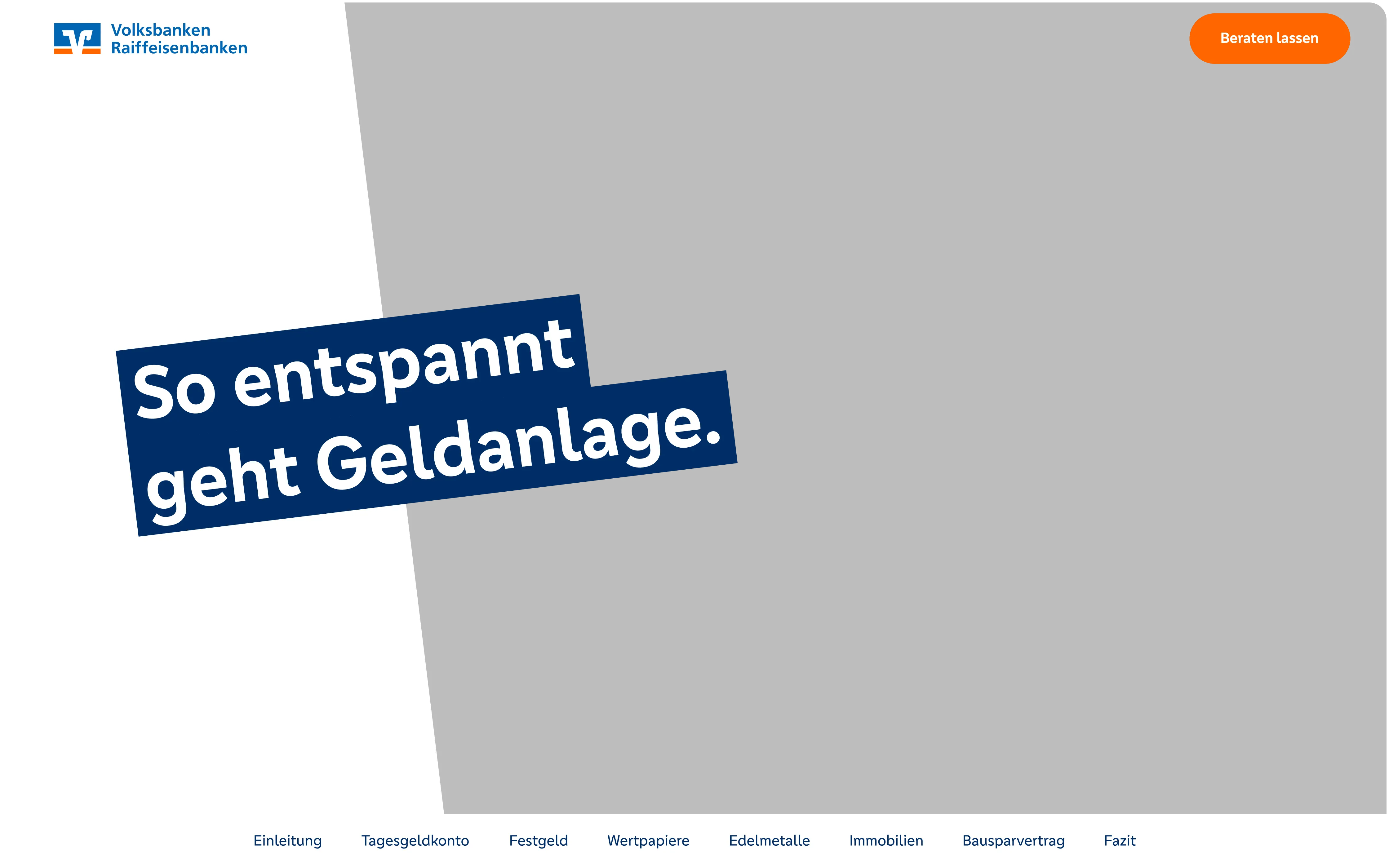Archive system for Concentration Camp Memorial
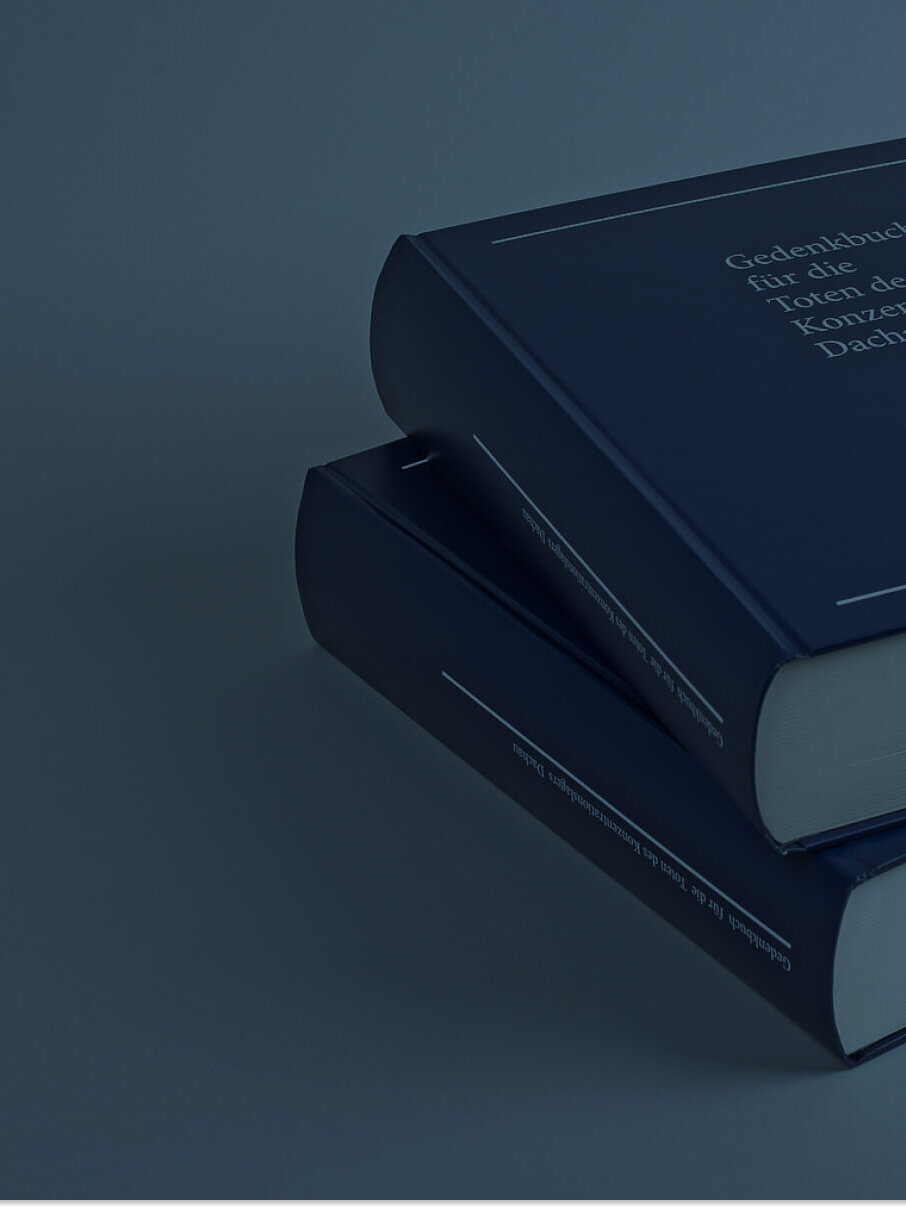
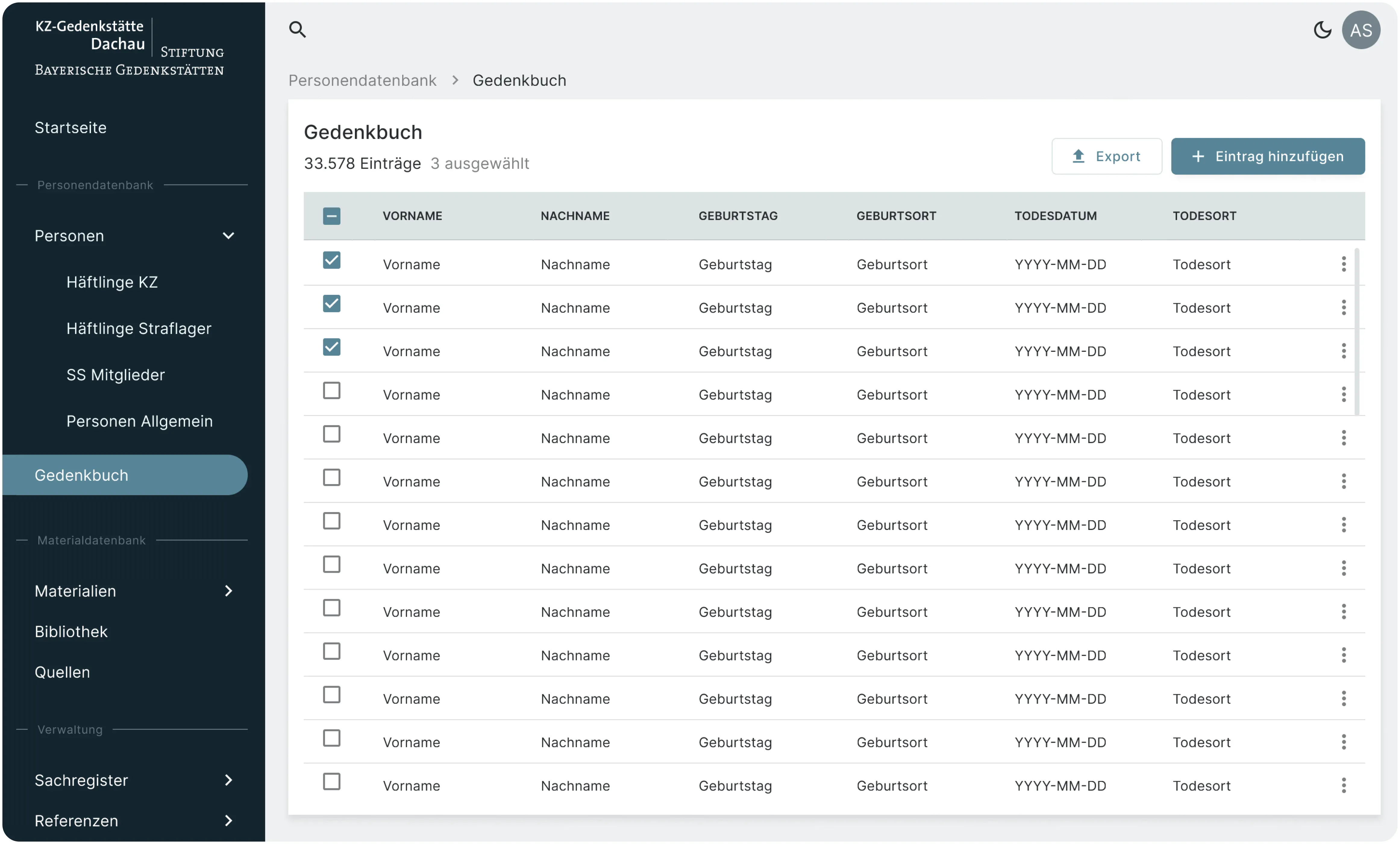
Expertise
Tech Stack
Awards
Duration
Challenge
The Dachau Concentration Camp Memorial needed a comprehensive migration of its data onto a future-proof technical basis. The challenge lay in the structural analysis and restructuring of the large amounts of data to ensure efficient daily use and targeted research for internal and external users.
Solution
We developed a powerful system for the efficient management of personal, material and administrative data. Through close collaboration during concept development, we were able to structure the data sensibly according to user needs. This ensures clean provision and archiving, high-performance indexing and targeted research of historically important data.
Our history with the Dachau Concentration Camp Memorial
The first version of the archive database was created in 2009, at that time with PHP 5 and the Dojo Javascript toolkit. This was followed between 2011 and 2013 by the visitor terminals in the memorial room and the “Memorial Book for the Dead of the Dachau Concentration Camp” in a printed version with more than 1,300 pages.
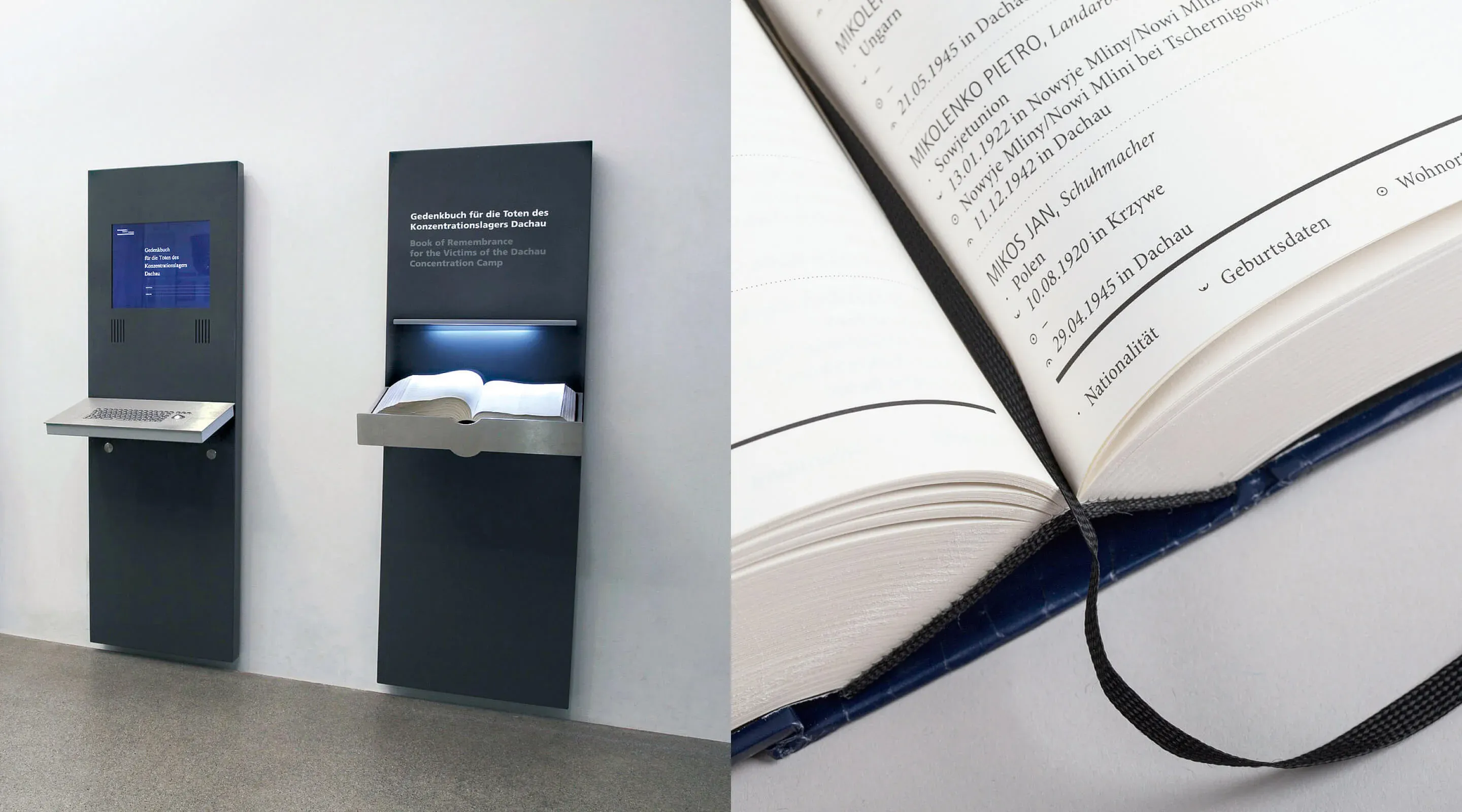
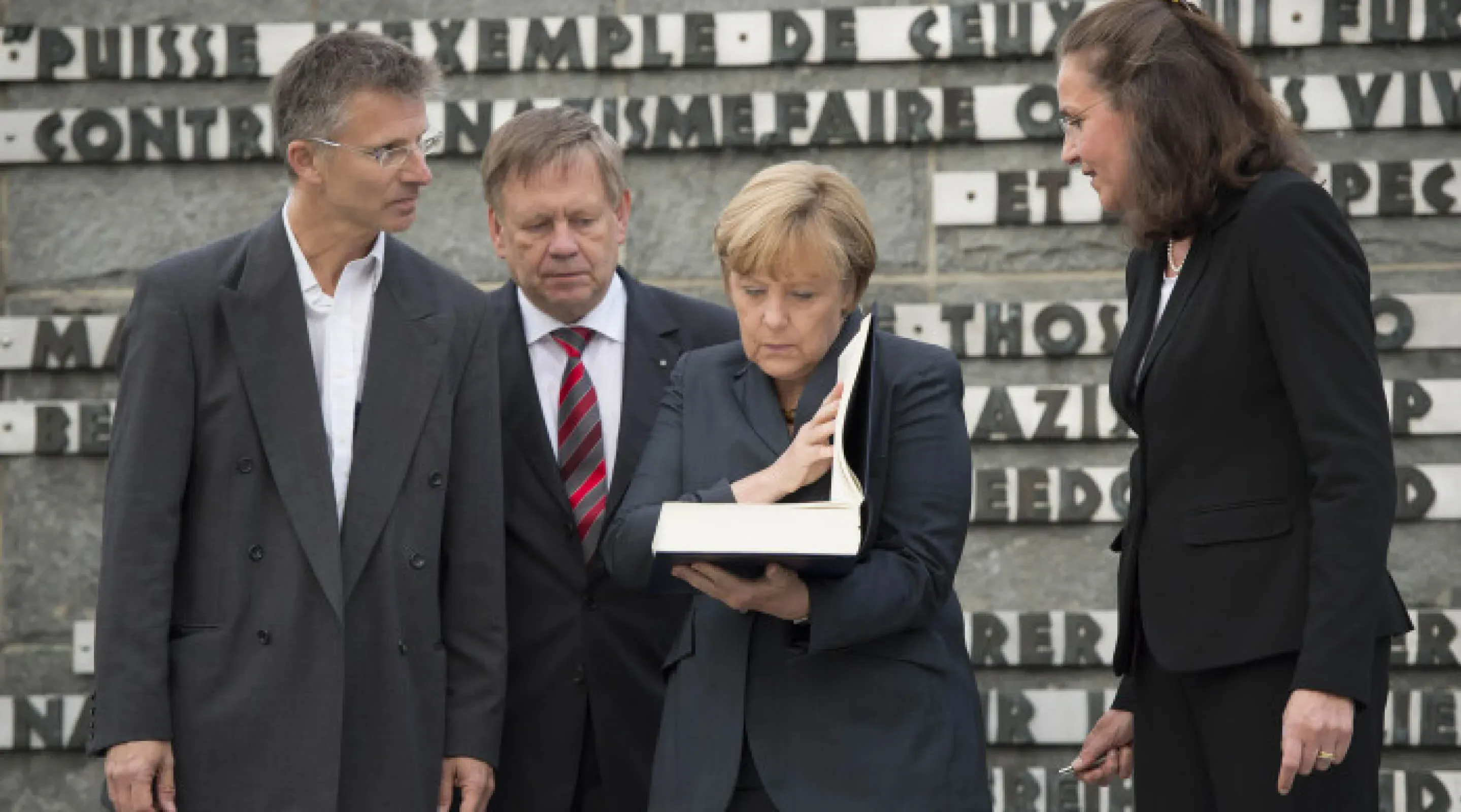
Restructuring of data and positive user experience
Before the migration, the structure of the large amount of data was analyzed and restructured in close communication between the customer, concept and development for optimal daily use and research by internal and external people. The result is a structurally sensible representation of the personal, material and administrative databases, which enables users of the portal to link related data and create it in such a way that the clean provision, archiving and targeted research and maintenance of the data that is so important to contemporary history is guaranteed can be.
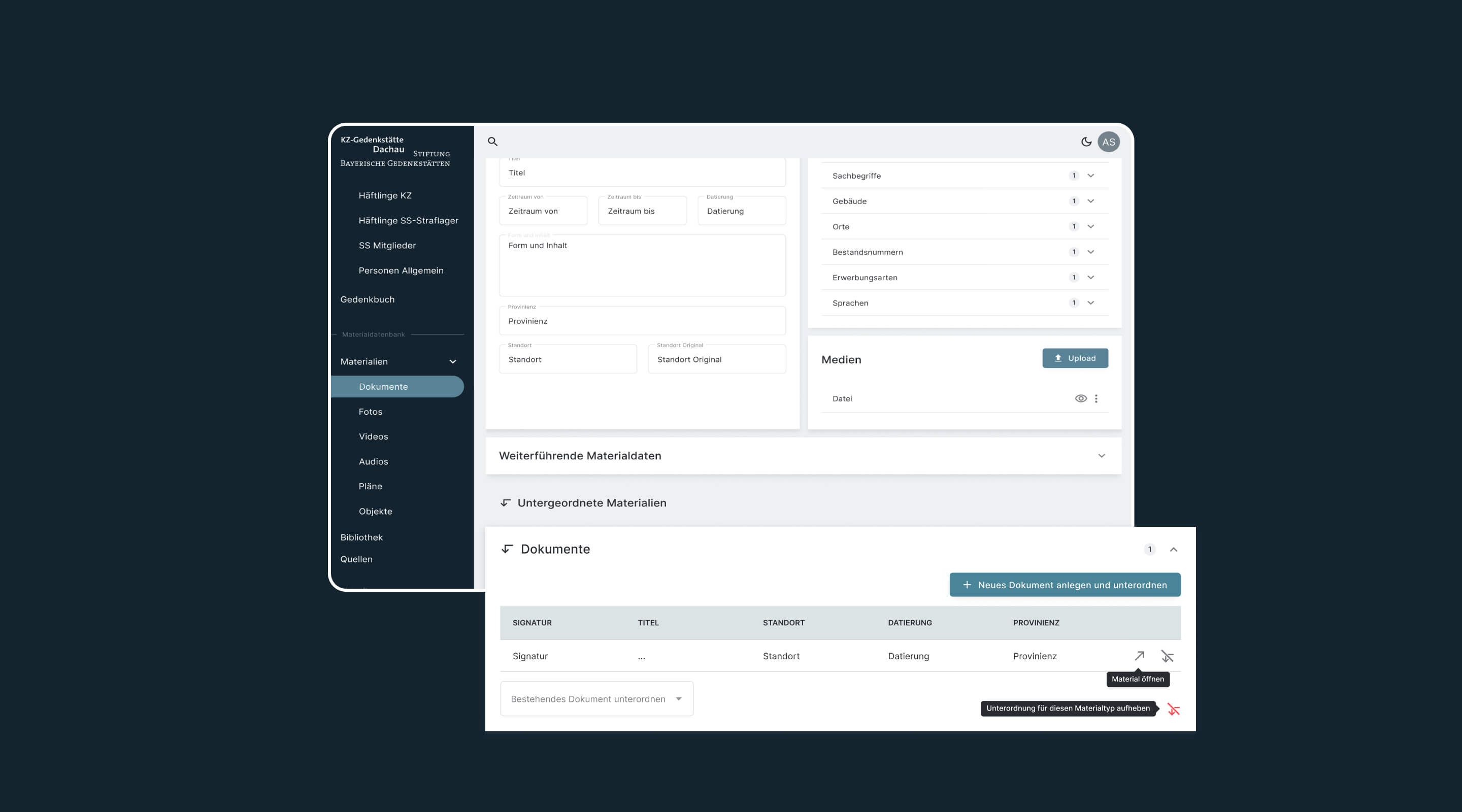
Migrating huge amounts of data as biggest challenge
First and foremost, the amount of data and how it is handled. This alone required intensive technical conception work and close coordination with information architecture and data collection. It was a process of assignment and reorganization, of data migrations and the demand for high-performance indexing and searchability.
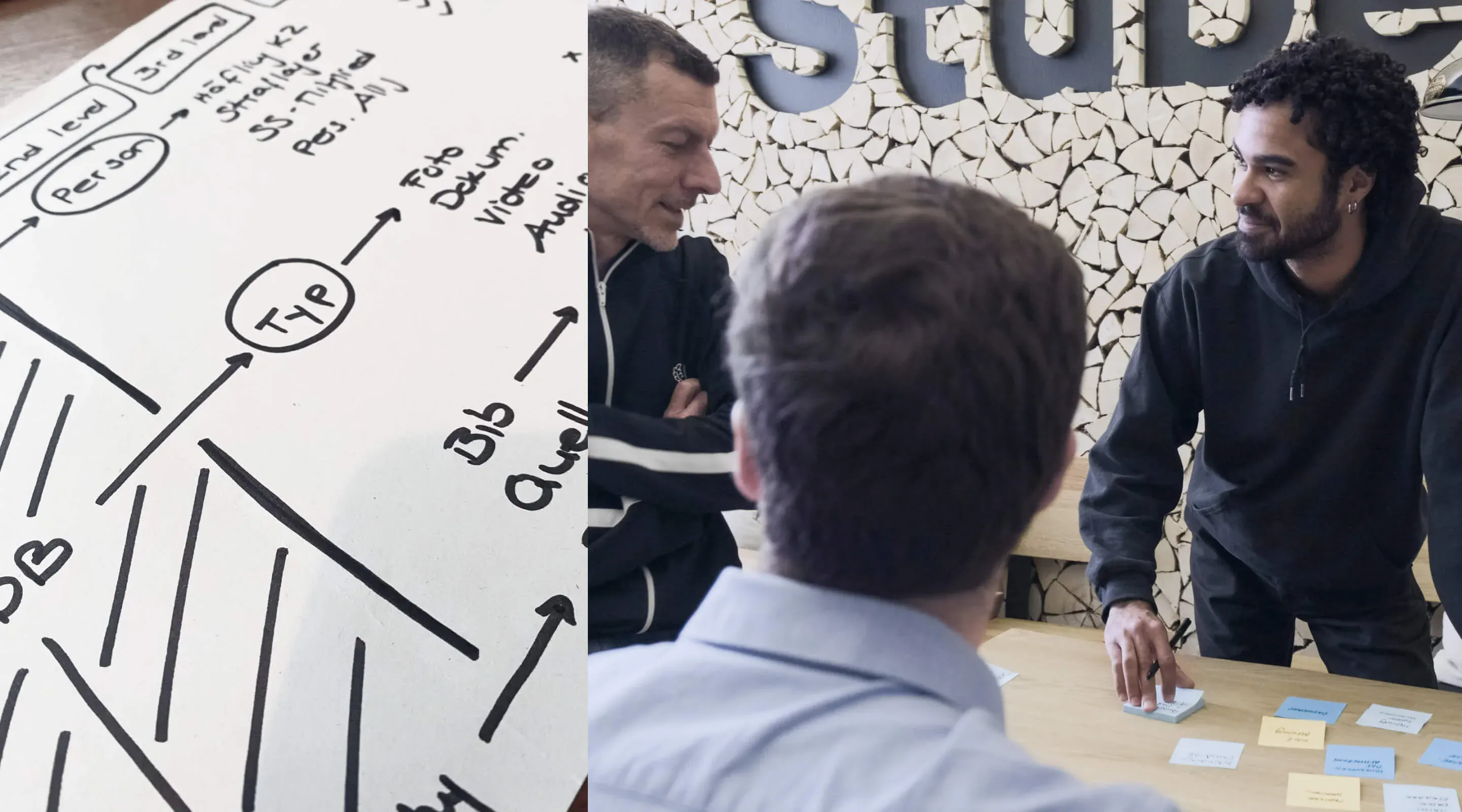
Flow Framework, Vuetify and Materio as the technical setup
The Flow Framework from Neos serves as the technical basis. However, instead of Flow's own domain model architecture, the content repository from the Neos CMS was used as the database, as better performance could be expected given the enormous amount of data.
The frontend essentially consists of a Vue app with Vuetify Components and Materio Templates, which communicates with the data layer via GraphQL. A central aspect of such a system is the high-performance and sophisticated search, including filtering and linking options, which was implemented using Elastic Search. Flow's granular rights management enables precise access control so that employees of the Dachau Memorial and external people can work with the system equally.

